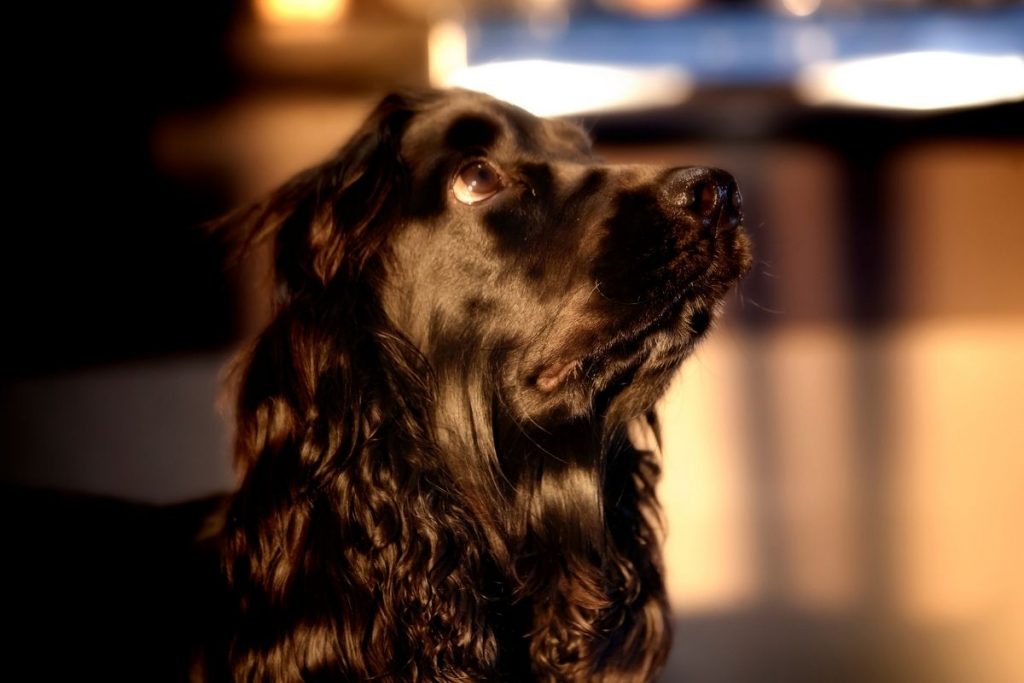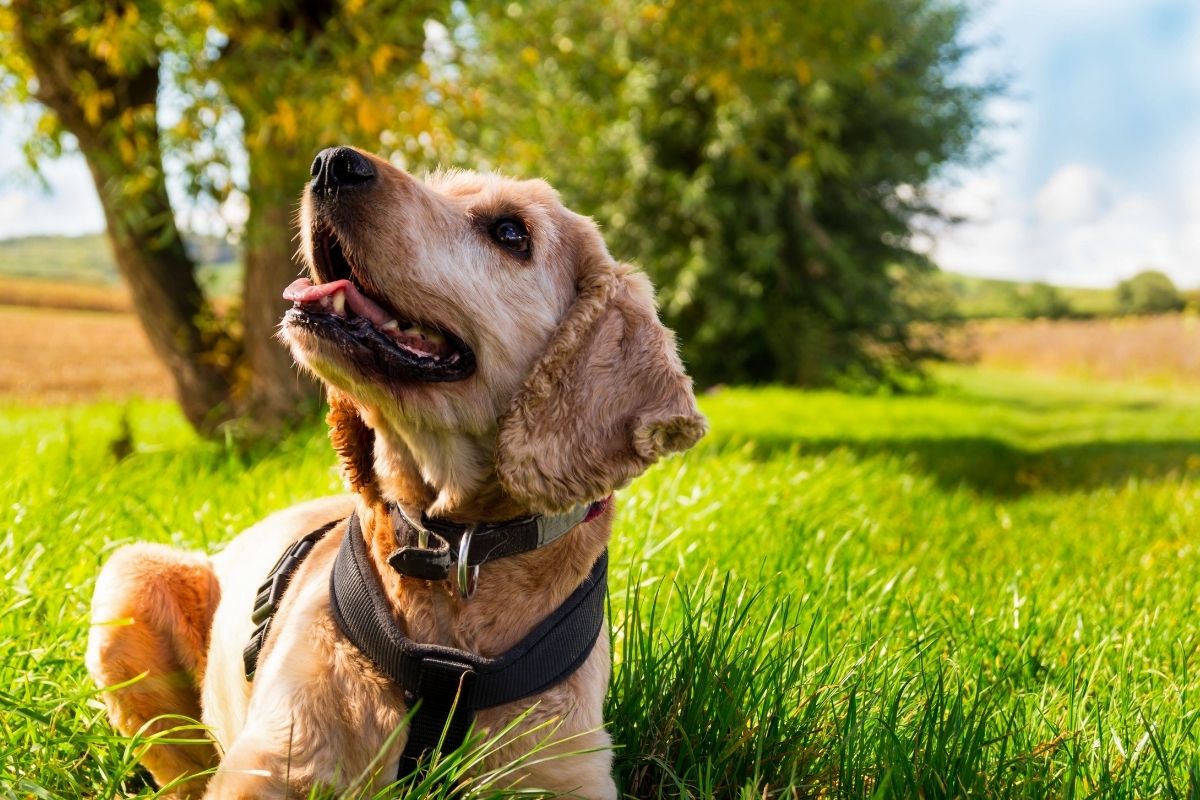Having a dog that walks nicely on and off the lead, to heel, is something that most dog owners would like, but, judging by the way many dogs behave on the lead this is more problematic than it should be.
Spaniels are one of the worst breeds for pulling on the lead as they simply live to hunt freely and cannot wait to get away and chase their noses.
If your spaniel pulls on the lead then resist the temptation to lose your temper. With some common sense and by following some simple and basic tips, you can easily and quickly train your spaniel to walk to heel both on and off the lead.
What should heel work look like for a Cocker spaniel?
It’s important to remember that Cockers ( as all spaniels ) are hunting dogs that are bred and intended to cover ground, using scent, to find game that can then be shot.
The whole instinct of working Cocker spaniels is to cover ground and find scent and game – walking to heel is neither important nor necessary in the mind of spaniels.
If you become pedantic about heel work with a spaniel then there is a very strong likelihood that you will affect his ability and willingness to hunt freely.
For me, a spaniel that walks off the lead and remains within 3 to 4 feet from me, is acceptable, and a dog that doesn’t pull to excess while on the lead is perfectly suitable.
If you desire or need a dog that will curl around your legs or press close to you while walking at heel, then a spaniel is not the dog for you – you should consider a Labrador or other breed that can function happily as a no slip retriever.
When should you train a Cocker spaniel to walk at heel?
The clue to the answer to this question partly lies in the previous paragraphs.
Heel work with spaniels should always be one of the last areas of training.
If you intend to work your Cocker either for shooting or competitions such as test, trials or even scurries, or agility or any activity where he will be expected to get away from ‘under your feet’, then heel work is bottom of the list for training.
You need your spaniel to be confident and covering his ground comprehensively, understanding his nose and trusting his sense of smell and you can hinder this development by over zealous heel work.
Just aim for your spaniel to walk comfortably on the lead and leave heel work alone until he is a competent hunter.
[amazon box=”1846890705″ template=”horizontal”]
How to teach heel work to a Cocker spaniel
There are many ‘ideas’ around training spaniels to walk nicely on the lead but often the best methods are also the easiest to work with and get the quickest results.
Decide which side of your body your spaniel will walk on – for most people this is the left side.
Find a quiet place where there are no distractions – such as people, kids, other dogs etc.
Sit your spaniel down on the side that he is to walk using the ‘hup’ or ‘sit’ command ( whichever he is familiar with).
Tap your thigh and say ‘heel’ and walk, with intent, forwards for 3 to 4 steps.
After the 4th step turn sharply left, 90 degrees, across your dog’s path.
You’ll find that the act of crossing his path makes him turn left with you and, as you turn, he will be walking to heel ( even though he doesn’t know it).

Walk a few more paces and then turn left again ( repeat the heel command) and you will find that he soon catches on and will realise the association of the word ‘heel’ with staying close.
As he progresses, turn right, away from the dog, so that you are pulling him, then turn back towards him so that the lead slackens.
Keep mixing up the turns, try going in a figure of eight and keep your spaniel guessing. This will help to keep him close when on the lead.
As your dog becomes familiar with ‘heel’ on the lead, you can progress to removing the lead and doing the same exercises while he is walking freely.
As with all training exercises you should progress slowly and not overdo things.
Keep the lead sessions short and always allow your spaniel some time to hunt after this type of training.
It may take some time for your spaniel to walk to heel and, it is unlikely that he will ever adopt the heel ‘etiquette’ of a retriever – but this should not be your objective anyway.
Final Words
No one wants a dog that attempts to pull their arm out of the socket whenever they go out on walks.
The reality is that if there were ever a breed of dog that tries this then Cocker spaniels ( and their larger relatives Springers ) are the biggest culprits for pulling on the lead.
You should always remember the desire of your spaniel – to be free and to hunt and this should always be the main focus for your spaniel training if you want to have a competitive, capable and great hunting spaniel.
Don’t get obsessed with heel work when training spaniels – yes, you need to give it some training time but if you become too focussed on it then you could really impact the ‘drive’ that your spaniel possesses.
So tread carefully and, if your spaniel shows signs of nervousness or reluctance to hunt, then knock the heel work on the head and leave it alone for a while.




